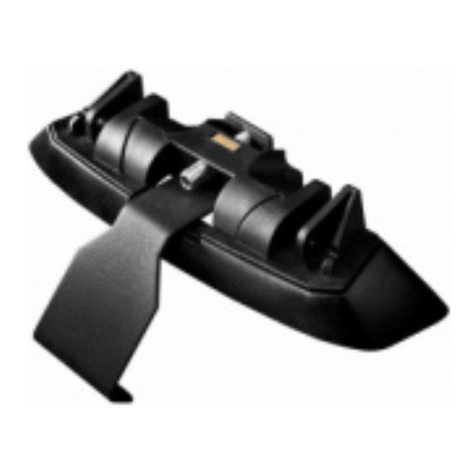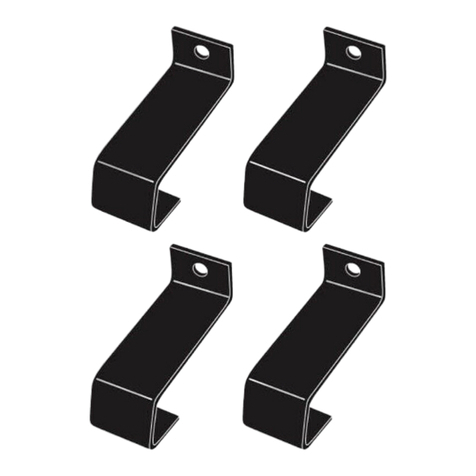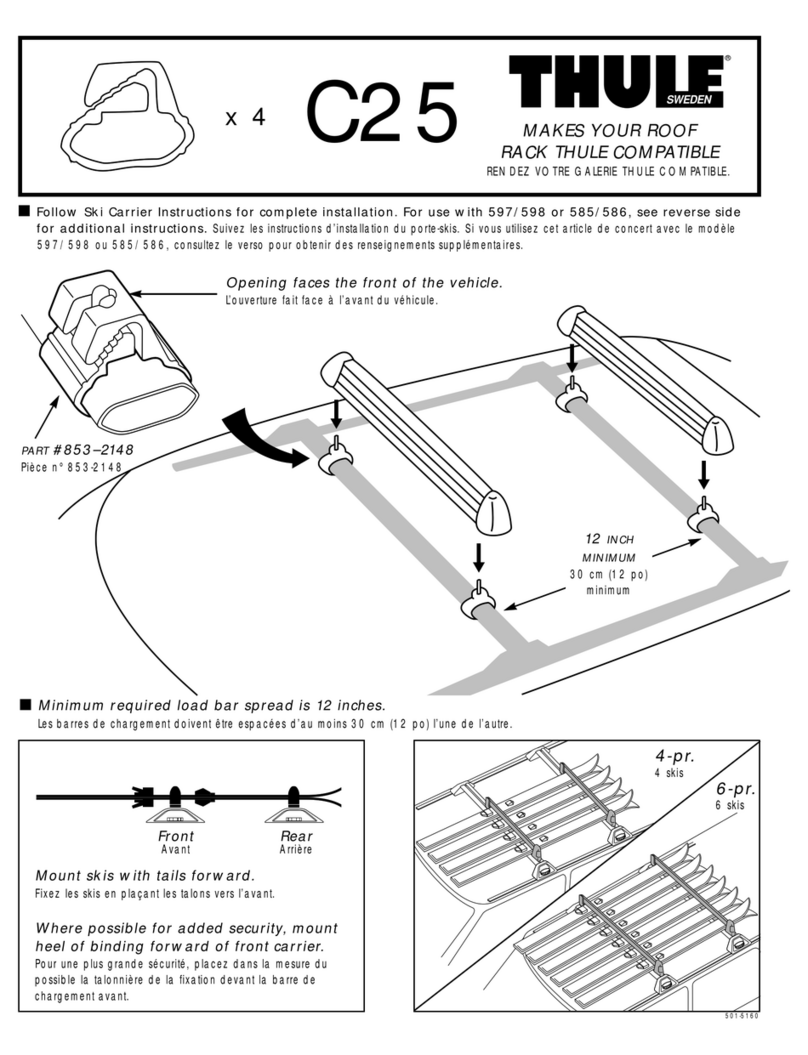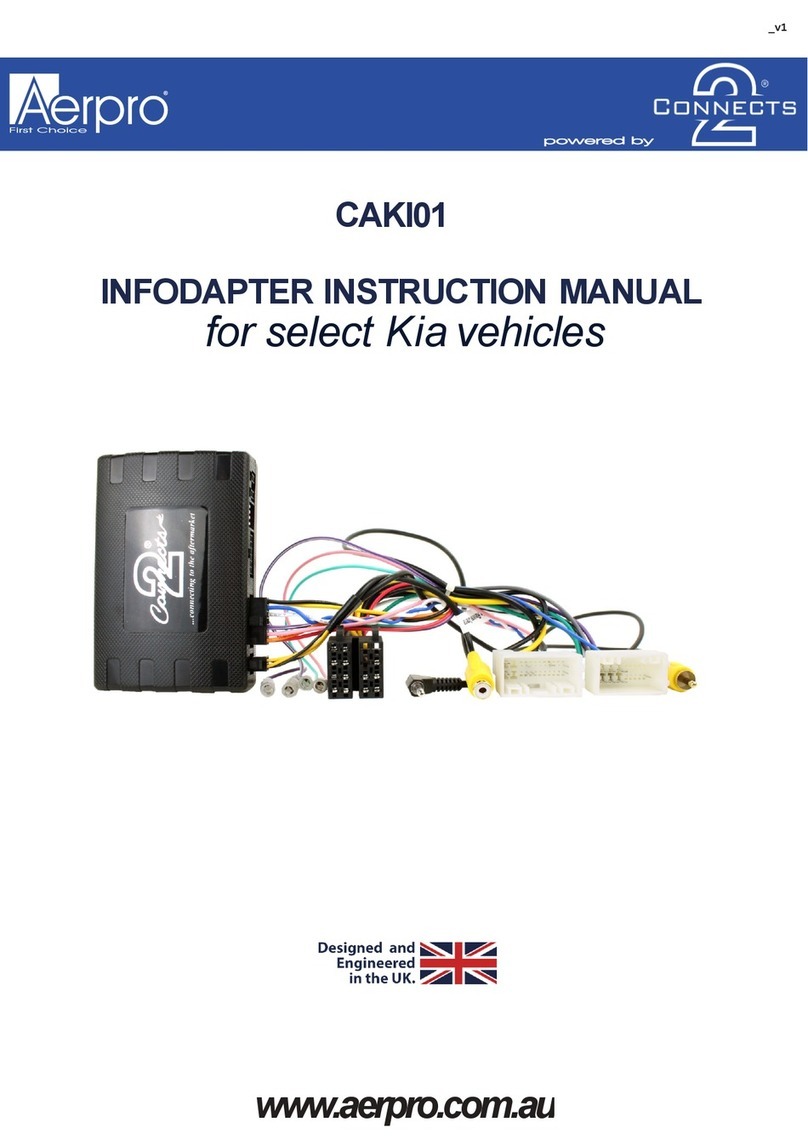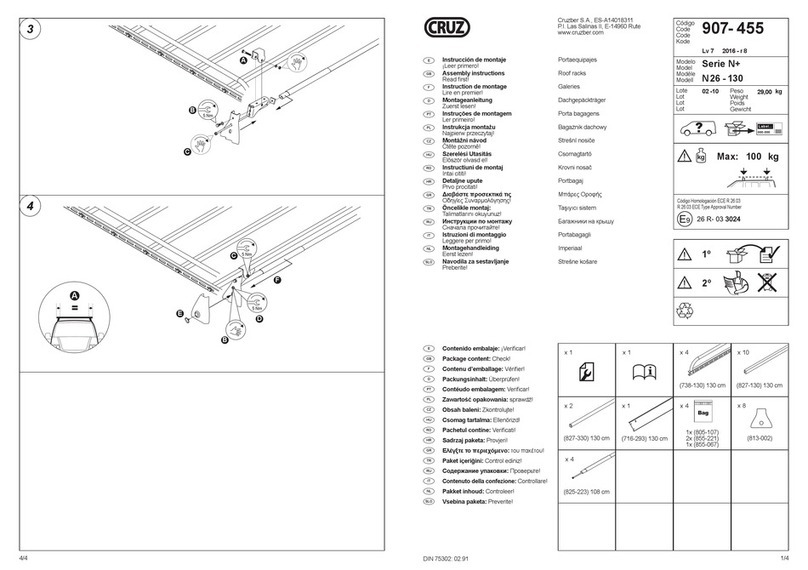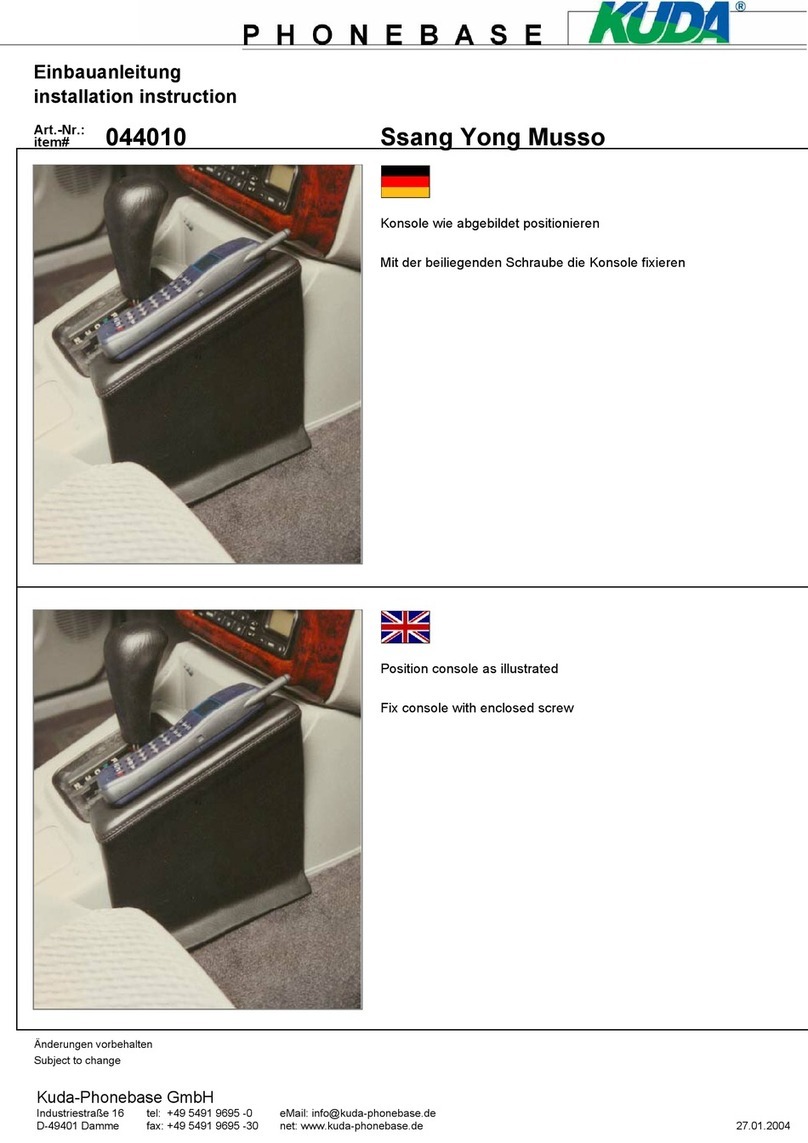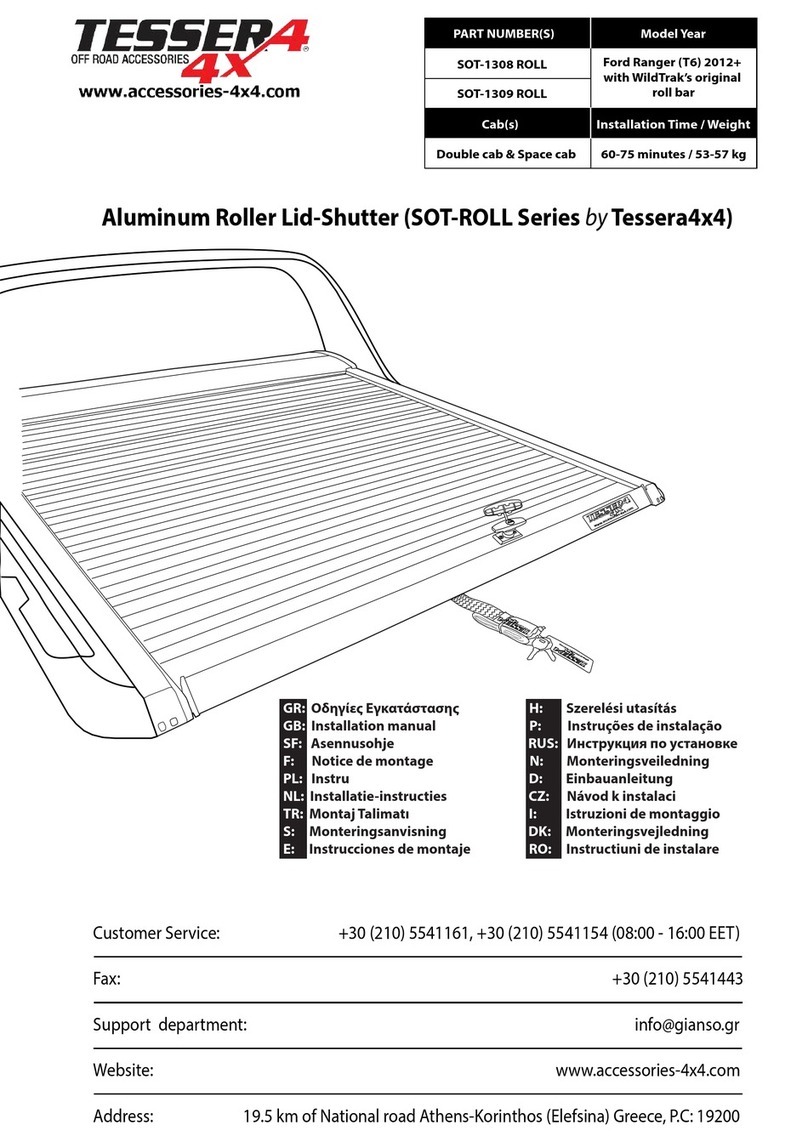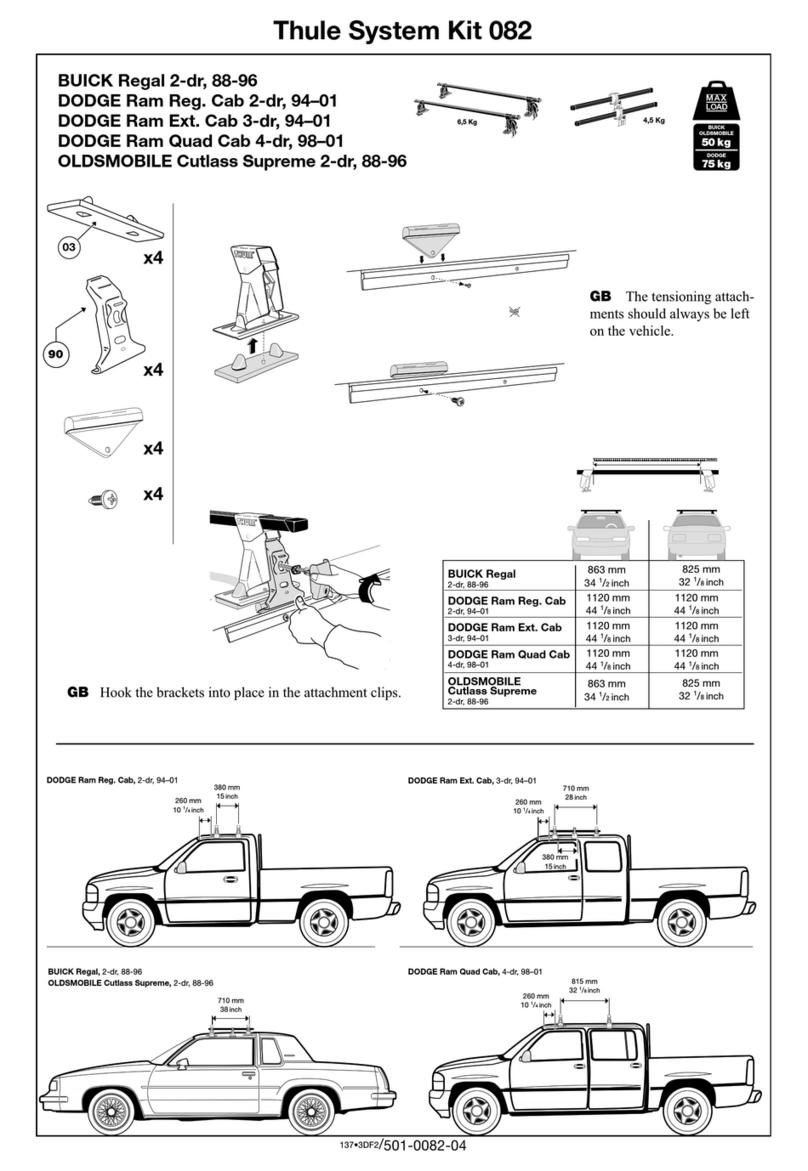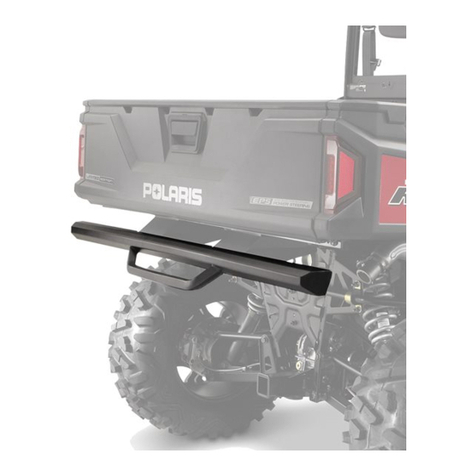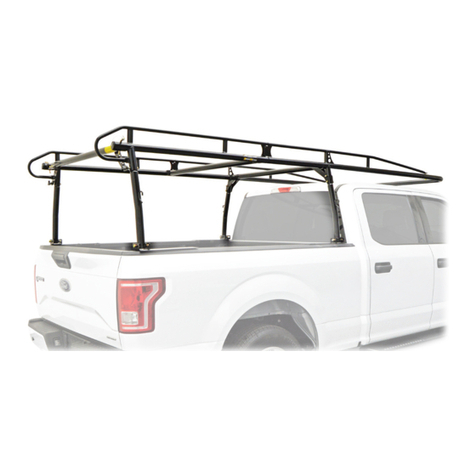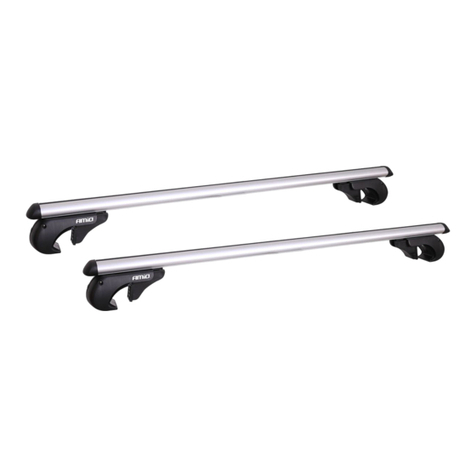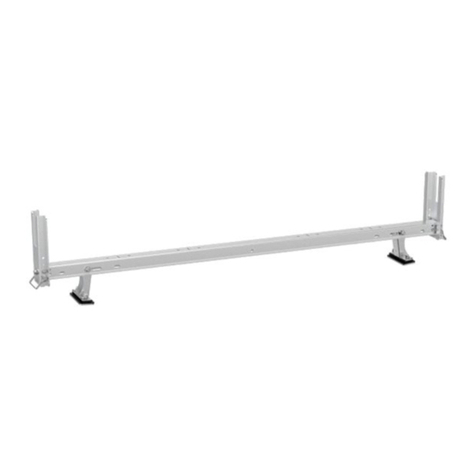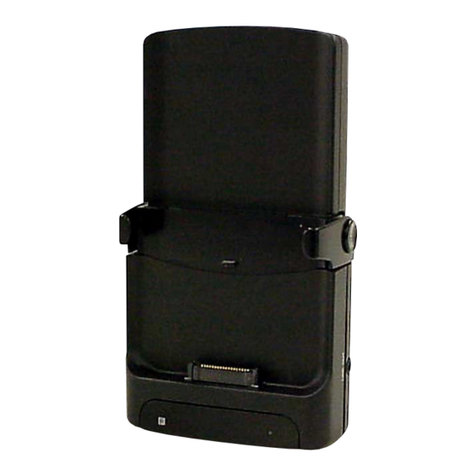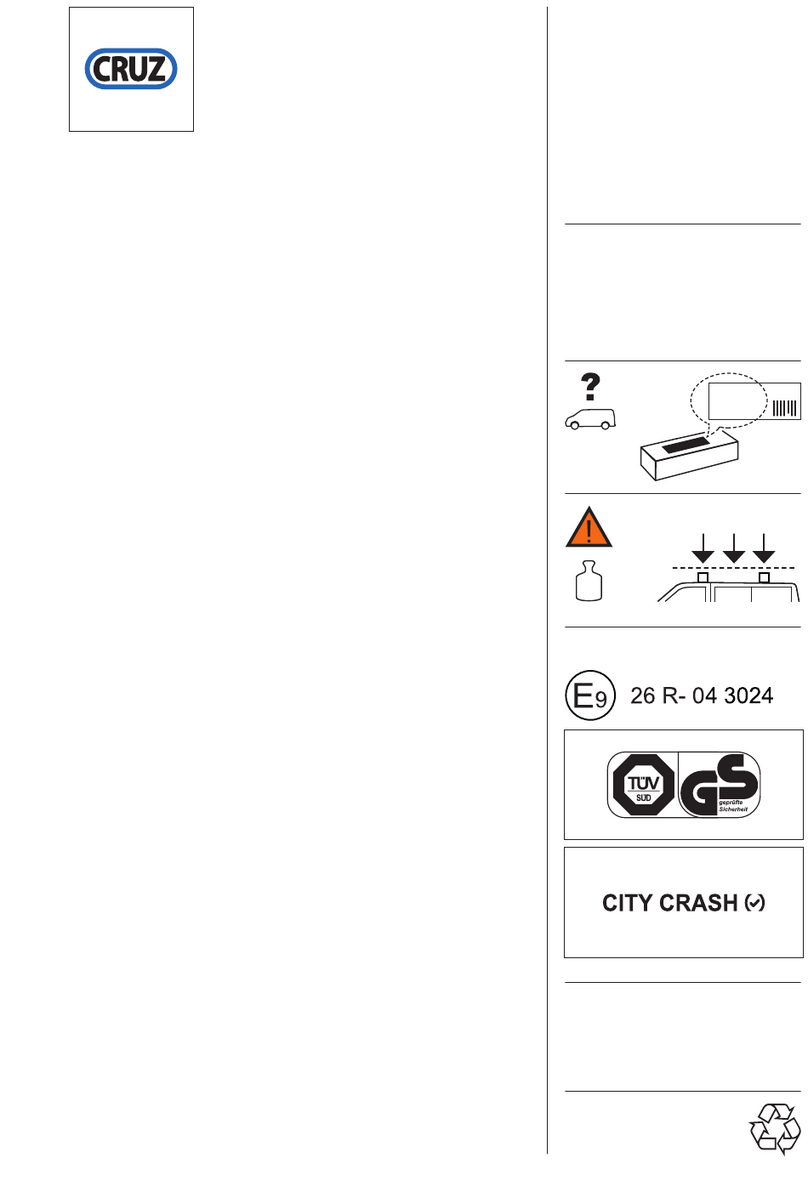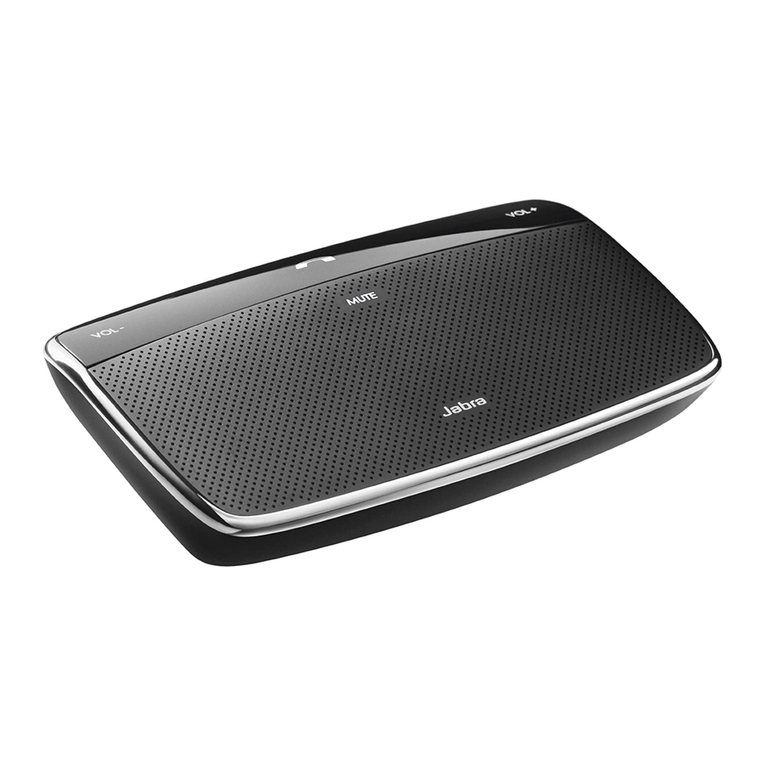Brake Commander R2-04-0 User manual

USER MANUAL
R2-04-0
MultiVolt 12-24V

Page 2

Page 3
Contents
4 Overview
4 Brake Commander
5 Wireless Remote
6 Using Brake Commander
6 Powering Up Brake Commander
6 The Wireless Remote
7 Disengaging the Park Brake
7 Powering Down Brake Commander
8 Brake Commander Installation
8 Choosing the Mounting Location
9 Mounting to the Trailer
10 Attaching a Master Cylinder
11 Electrical Overview
11 ElectricalSpecications
12 Electrical Connections
13 Auxiliary Circuit Test
13 Tail Light Circuit Test
13 Brake Light Circuit Test
14 Connecting a Break-Away Switch
14 Break-Away Circuit Test
15 Wireless Remote
15 Charging the Wireless Remote
15 Turning the Wireless Remote ON and OFF
16 Connecting a Wireless Remote
17 Status Icons
18 Settings Menu
21 Functions
22 LED’sandWarnings
22 BrakeCommanderLED’s
23 Wireless Remote Warnings

Page 4
Overview
Brake Commander

Page 5
Wireless Remote

Page 6
Using Brake Commander
OnceBrakeCommanderisinstalled,ttedwithamastercylinderandtheWirelessRemote
is plugged into a USB power source, Brake Commander is ready to be used.
The Wireless Remote features Instant ON technology, thus it only needs to be pre-charged if
it is intended to be used in situations that do not permit connection to a USB power source.
Powering Up Brake Commander
Power-up Brake Commander by connecting your trailer’s electrical connector to the tow
vehicle.Turnyourvehicle’sParker’sorHeadLightsON.Ittakesapproximately2minutesto
fullychargetheBrakeCommander.IfyourtowvehicleisttedwithanAuxiliarycircuit,you
don’tneedtoturnonyourlights.Tocheckpowerisbeingsupplied,thePowerLEDonthe
Brake Commander should be ON.
During the power-up, Brake Commander establishes a wireless network and performs a
series of system checks. If the Brake Commander was previously left with the Park Brake On
or the Break-Away active, the system checks will be performed once the condition is cleared.
The system checks may take up to 60 seconds to complete. If they are interrupted by a
braking event (pressing the brake pedal in your tow vehicle or the OveRide button on the
Wireless Remote), the start-up routine restarts once the interrupting condition is removed.
NOTE If during the power-up, the system checks detect any issues, the Wireless Remote will display
a status icon and warning message. Refer to page 17 for status icon details and pages 23 through 25
for warning messages.
NOTE A Low Power warning will be active for the rst few minutes after powering up Brake Commander
- this is normal and will clear once the Capacitor Banks have been sufciently charged for 1 minute.
The Wireless Remote
Connecting the Wireless Remote to a USB power source will turn it ON, it will then begin
periodically searching for a Brake Commander. The Wireless Remote will automatically join
therstBrakeCommanderitnds.TheBrakeCommanderwillnotpermitadditionalremote’s
to join simultaneously.
TheWirelessRemote’sscreendisplaysBrakeCommander’sstatusasaniconaswellas
any warning messages that may prevent Brake Commander from operating correctly.
When connected to a Brake Commander the Wireless Remote will enter “sleep” mode after
20 seconds of inactivity.
The Wireless Remote can be woken from sleep, by pressing either the “+” (plus), “-” (minus)
or “Override” buttons. Additionally the Wireless Remote will wake from sleep when the brakes
are used or a warning is activated.
The Wireless Remote can only be turned OFF when it its no longer connected to a Brake
Commander. To turn off press and hold the “-” (minus) button until the screen goes black.
Brake Commander Operation
WiththeBrakeCommanderpoweredbytheHeadlightsandtheWirelessRemoteconnected
to the Brake Commander. The system will provide proportional brake response in relation to

Page 7
the rate of deceleration.
When stationary, if the bakes are operated. Brake Commander will only provide a minimal
brake response as there is no deceleration.
The Sensitivity or “Gain” can be adjusted independently in both the forward and reversing
directions. The Sensitivity allows the brake response to be tuned to suit the weight of the
trailer and/or the drivers personnel preferance. Ideally the sensitivity should be set so as the
tow vehicle and trail feel to brake equally. To achieve this:
• While driving slowly in a safe area
• Set the forward sensitivity to an initial value, 40% is a good starting point.
• Brake lightly at a constant rate, check if the trailer brakes can be felt.
• Repeat the test until the trailer brakes are just felt to be braking harder than the tow
vehicles.
• Then reduce the forward Sensitivity by approximately 5%.
All settings are stored in the Brake Commander device, if a new or different remote is
connected, it will access the values stored in the device.
If the Wireless Remote is lost or damaged the braking system will continue to provide braking,
howevertheminimumbrakeresponsewillbesignicantlyhighersoastoactasawarningto
the driver that a remote is not present. Operating in this condition is not recommended and
should be resolved as soon as possible.
If the driver forgets to turn the lights ON or there is an electrical fault preventing
the normal power supply, Brake Commander will be charged every time the driver
usesthebrakes,oncesufcientlycharged,thebrakingsystemwillprovidebraking,
howevertheminimumbrakeresponsewillbesignicantlyhighersoastoactasa
warning to the driver of the condition. Operating in this condition is not recommended
and should be resolved immediately.
Brake Commander provides a Park Brake function that can be used in temporary
conditions only. The park brake function can applied by double clicking the “+”
(plus) button and released by double clicking the ”-” (minus) button. The function
canbeappliedorreleasedwheneverthedeviceissufcientlycharged.Additionally
operating the Brakes will release the Park function automatically.

Page 8
Brake Commander Installation
Brake Commander is an Electro-Mechanical trailer brake controller. Brake Commander is
bolted to the trailers frame and a hydraulic master cylinder is attached. Brake Commander
iswiredintothetrailerswiring,thereforenospecicwiringisrequiredforthetowvehicle.
Once installed Brake Commander uses built-in sensors and electronics to provide proportional
line pressure to the trailers brakes.
Choosing the Mounting Location
BrakeCommanderisintendedtobemountedonthetrailer’sdrawbarareaandonalevel
surface such as the TOP FACE of a draw bar or cross member.
Brake Commander can be mounted at any angle relative to the direction of travel when
viewed from above.
If considering mounting Brake Commander inside the boot of a caravan or a tool box etc, it
is recommended to check the wireless signal strength before mounting.
Brake Commander is weather resistant, however DO NOT mount the device in a position
that will allow Brake Commander to be submerged in water.

Page 9
Mounting to the Trailer
4x mounting holes have been provided for attaching Brake Commander to the trailer. The
drawing below indicates the size and location of the mounting holes.
Brake Commander can be secured to the trailer by directly bolting it to the trailer frame.
Alternately Brake Commander can be bolted to a sub plate that is in turn secured to the
trailer by means of welding or bolting. DO NOT weld Brake Commander directly to the frame
of the trailer.

Page 10
Attaching a Master Cylinder
BrakeCommanderoperatesthemastercylinderbypushingdirectlyonthemastercylinder’s
piston. To install the master cylinder, remove any rubber boots and linkages, ensure the clip
thatretainsthemastercylinder’spistontscomfortablyover BrakeCommander’spiston.
Measure the available stroke of the master cylinder, then bolt the master cylinder to the
mounting boss. A gasket compound may be used to seal this connection.
NOTE The available stroke of master cylinder is required for the stroke parameter in the Wireless
Remote’s Setup menu.
When Brake Commander is powered up, the start up routine will automatically locate the
master cylinders piston and calibrate the Start Point. Once the start up routine is complete,
the STATUS LED will be ON. Refer to the Wireless Remote’s Functions on page 21 for
details on how to re-run the start up routine if required. Connect hydraulic lines and braking
system as required. For assistance in bleeding the brakes refer to the Functions on page 21.

Page 11
Electrical Overview
Brake Commander is connected to the Earth, Tail Lights, Auxiliary, and Brake Light Circuit of
thetrailer’swiring.ForBreak-AwayfunctionalityaBreak-Awayswitchmayalsobeconnected.
Brake Commander supports 2 sources of power supply, Auxiliary and Tail Lights. When
towed by vehicles with an active Auxiliary pin, Brake Commander will draw its power from
the Auxiliary Circuit. If power is not available on the Auxiliary Circuit, Brake Commander can
bepoweredbyswitchingthevehicle’slightstoParker’sorHeadLightstoprovidepoweron
the Tail Light Circuit.
NOTE When initially charging the Brake Commander 12-24v units, the charge rate will begin at
a reduced amount (< 0.5amps). Once the Capacitor Bank reaches a preset value the current
draw will increase to the full charge rate. During this stage the remote will indicate “Low Power”.
ElectricalSpecications
System Voltage
Nominal 12.0 - 24.0 V
Maximum 32.0 V
Minimum 9.0 V
Current Ratings
Earth Max 6.5A
Auxiliary Max 6.5A
HeadLights Max 6.5A
Brake Lights Max 6.5A
Break-Away <100mA at 12.0V
Wiring Colours
Earth White
Tail Lights Brown
Auxiliary Green
Brake Lights Red
Break-Away Yellow
Electrical Connections

Page 12
Wire in the Earth, Auxiliary, Tail Lights and Brake Lights ensuring that each wire is connected
to the corresponding circuit on the trailer.
NOTE If wires are not connected correctly, Brake Commander may be irreversibly damaged
when powered up.
NOTE Brake Commander recommends using a 12V power source such as a small motorbike
battery and test leads to test the wiring connection’s. Alternatively if you are condent that the
electrical connections are correct, you may use the tow vehicles standard connection as the
source for the 12V power.
NOTE If Break-Away is not required, leave the Break-Away (yellow) wire unattached; DO NOT
connect to earth or any other electrical circuit.
The Wireless Remote is required for functionality during the testing procedures. Refer to
page 15 for details about charging the Wireless Remote and turning it on.

Page 13
A master cylinder should be attached prior to conducting the following tests.
Auxiliary Circuit Test
Oncesatisedall4wiresareconnectedcorrectly,usinga12Vpowersource;
1. Connect“NEG”tothetrailer’sEarthCircuit.
2. Connect“POS”totheAuxiliaryCircuit.BrakeCommander’sPOWERLEDshouldimmediatelyturn
ON indicating the Auxiliary Circuit is operating correctly.
3. The POWER LED will turn OFF immediately when the 12V power source is removed.
NOTE At this stage Do Not leave the power source attached for longer than 10-20 seconds,
this prevents the start-up routine running and various warnings from being generated. If the
power source is left on, the start-up routine will run and warnings such as No Power Supply will
be generated when the power source is removed. Any warnings will not be cleared until the
condition has been rectied.
NOTE The important test at this point is that the POWER LED is turning ON when 12V is connected
to the Auxiliary Circuit. If the POWER LED does not turn on, check the wiring for any problems.
Tail Light Circuit Test
AspertheAuxiliaryCircuitTestabove,usinga12Vpowersource;
1. Connect“NEG”tothetrailer’sEarthCircuit.
2. Connect“POS”totheTailLightCircuit.BrakeCommander’sPOWERLEDshouldimmediatelyturn
ON indicating the Tail Light Circuit is operating correctly.
3. The POWER LED will turn OFF immediately when the 12V power source is removed.
NOTE At this stage Do Not leave the power source attached for longer than 10-20 seconds, this
prevents the start-up routine running.
NOTE The important test at this point is that the POWER LED is turning ON when 12V is connected
to the Tail Light Circuit. If the POWER LED does not turn on, check the wiring for any problems.
Brake Light Circuit Test
To test the Brake Light Circuit, connect the 12V power source to the Tail Light Circuit as per
the Tail Light Circuit Test, however this time leave the 12V power source connected.
1. Allow Brake Commander to charge for 2 minutes. During this time a connection with the Wireless
Remote will be established (if a connection is not automatically established within 2 minutes refer
to page 16 for details on connecting a Wireless Remote).
2. As soon as a connection with the Wireless Remote is established and the Capacitor Bank is
sufcientlycharged,astart-upprocedurewillrun.Waitforthestart-upproceduretocomplete.
3. Connect the 12V power sources “POS” to the Brake Light Circuit. You should immediately
hear Brake Commander start as it attempts to apply line pressure to the brake system. Brake
Commander will stop when minimum line pressure is reached or the stroke limit is reached.
4. Remove the 12V power source “POS” from the Brake Light Circuit and Brake Commander will
retract to the home position.
NOTE If you repeatedly place the 12V “POS” on and off the Brake Light Circuit, Brake Commander
will move in and out accordingly.

Page 14
Connecting a Break-Away Switch
When connecting a Break-Away Switch no external batteries are required. Use this Brake
Commander Manual for the connection instructions and DO NOT install the Break-Away
Switch with alternate instructions.
Make sure the Break-Away Switch is a normally open (N.O.) conguration. Connect one
leadfromtheswitchtoBrakeCommander’sYellowlead,connectthesecondleadfromthe
switch to Earth. Check and ensure continuity between the switches second lead and Brake
Commander’sEarth.
Break-Away Circuit Test
To test the Break-Away Circuit, connect the 12V power source to the Tail Light Circuit as per
the Tail Light Circuit Test, however this time leave the 12V power source connected.
1. Allow Brake Commander to charge for 2 minutes. During this time a connection with the
Wireless Remote will be established (if a connection is not automatically established
within 2 minutes refer to page 16 for details on connecting a Wireless Remote).
2. As soon as a connection with the Wireless Remote is established and the Capacitor
Bankissufcientlycharged,astart-uproutinewillrun.Waitforthestart-upprocedure
to complete.
3. Operate the Break-Away switch manually. You should immediately hear Brake
Commander start as it attempts to apply line pressure to the brake system. Brake
Commander will stop when required line pressure is reached or the stroke limit is
reached.
4. Reset the Break-Away switch and Brake Commander will retract to the home position.

Page 15
Wireless Remote
All Brake Commanders are supplied with a Wireless Remote. Although Brake Commander
handles all critical brake control operations internally, the Wireless Remote provides constant
feedback to the driver as well as independent trailer brake control via the OverRide button.
NOTE a Wireless Remote must be connected to the Brake Commander when towing.
Charging the Wireless Remote
The Wireless Remote has a USB compliant charging port allowing the Wireless Remote
to be charged by computers with USB ports, wall socket USB charges or 12V style USB
chargers.
When charging, a battery indicator on the screen will indicate the battery is charging. When
the battery is fully charged the indictor will change to show the battery level.
Note If the battery indicator is RED while charging, the Wireless Remote is preconditioning the
battery and will automatically switch off if removed from the USB power source.
Turning the Wireless Remote ON and OFF
Connecting the Wireless Remote to a USB power source will turn it ON and it will begin
searching for a Brake Commander.
Pressing the “ + “ (plus), “ - “ (minus) or OverRide button will wake the Wireless Remote from
Sleep. The Wireless Remote will turn ON and begin searching for a Brake Commander.
To turn the Wireless Remote OFF, wait for the screen to display NO DEVICE FOUND, then
hold down the “ - “ (minus) button for 2 seconds.
Note The Wireless Remote can only be turned OFF when it is not connected to a Brake
Commander. While connected, the Wireless Remote will sleep if no buttons are pressed for 20
seconds. The Wireless Remote will wake to display any changes to device status (including
normal brake usage) or warnings.

Page 16
Connecting a Wireless Remote
ForaWirelessRemotetooperatewithaBrakeCommanderitmustrstbeconnectedtoit.
TheWirelessRemotewillautomaticallyconnecttotherstavailableBrakeCommander;
Toachievethebestpossibleresults;
• Ensure the Brake Commander you are connecting to has been turned ON for
2 minutes or more.
• Ensure the Brake Commander is not already connected to another Wireless Remote, if
so, move the other Wireless Remote out of radio range.
• Turn the Wireless Remote ON by connecting it to a USB power source or wake it from
sleep with the . “+” (plus) button, “-”(minus) button, or Override Button
• The STATUS LED on the Brake Commander will blink rapidly whenever Brake
Commander is resetting the wireless network, the wireless network is reset whenever
there is no communication for a period of 20 seconds. Short delays in establishing an
automatic connection may occur if the network is being reset while the Wireless Remote
is searching.
Once connected, the Wireless Remote will display the current status of the Brake Commander.
The buttons can now be used to perform various functions as outlined.
If a Wireless Remote has been charged and is sitting in the tow vehicle sleeping, Brake
Commander will wake it up and establish an automatic connection. This connection method
can take a while (2-3 minutes), manually waking the Wireless Remote will establish the
connection quicker.

Page 17
Status Icons
TheiconsdisplayedbytheWirelessRemoteprovidefeedbackaboutBrakeCommander’s
status. Refer to page 23 through 25 for warning icons and descriptions.
System Ready
Also implies the brakes are not currently in use
Brakes are ON or OverRide is ON
Park Brake is active
Break-Away is active
Searching
The Wireless Remote is searching for a Brake
Commander
No Device Connected
The Wireless Remote is not connected to a Brake
Commander. Make sure Brake Commander is turned
on, in radio range and the Wireless Remote is linked
with the Brake Commander
Please Link
The Wireless Remote has established communication
withaBrakeCommanderandiswaitingforconrmation

Page 18
Settings Menu
With the Wireless Remote connected to the Brake Commander, press the Setup button to
entertheSettingsmenu.Therstparameterisdisplayed.Tomovetothenextparameter
within the menu, press the Setup button again. The Settings menu will automatically exit if
no buttons have been pressed for more then 10 seconds.
Brake Response Forward
To tune the brake response for the forward direction, enter the Settings menu (by pressing
the Setup button) and locate the Brake Response Forward parameter. Use the “ + ” (plus) or
“ - “ (minus) buttons to adjust the value.
Allowable range is from 0% to 200%. The default value is 100%.
Brake Response Reverse
To tune the brake response for the reverse direction, enter the Settings menu (by pressing
the Setup button) and locate the Brake Response Reverse parameter. Use the “ + ” (plus) or
“ - “ (minus) button to adjust the value.
Allowable range is from 0% to 100%. The default value is 20%
Settings menu when Locked
Settings
Brake Response Forward
Brake Response Reverse
Settings menu when Unlocked
Settings
Brake Response Forward
Brake Response Reverse
Serial Numbers
Installation Angle
Stroke
Start Point
Device 1.1.1
000000000000
Remote 1.1.1
000000000000
Brake Commander model designator
Brake Commander serial number
Wireless Remote model designator
Wireless Remote serial number
Serial Numbers
Maximum Output
Settings menu when Locked
Settings
Brake Response Forward
Brake Response Reverse
Settings menu when Unlocked
Settings
Brake Response Forward
Brake Response Reverse
Serial Numbers
Installation Angle
Stroke
Start Point
Device 1.1.1
000000000000
Remote 1.1.1
000000000000
Brake Commander model designator
Brake Commander serial number
Wireless Remote model designator
Wireless Remote serial number
Serial Numbers
Maximum Output

Page 19
Stroke
AfterBrakeCommanderisinstalled,themastercylinder’sstrokemustbeenteredintothe
system. To set the stroke, enter the Settings menu (by pressing the Setup button) and locate
the Stroke parameter. Use the “ + ” (plus) or “ - “ (minus) button to adjust the value.
Allowable range is from 10.0mm to 45.0mm. The default value is 25.4mm.
Installation Angle
After Brake Commander is installed, the installation angle relative to the direction of travel
must be entered into the system. To set the angle, enter the Settings menu (by pressing the
Setup button) and locate the Installation Angle parameter. Use the “ + ” (plus) or “ - “ (minus)
button to adjust the value. Refer to the diagram below for assistance in setting the angle.
Allowable range is from -180 degrees to 180 degrees. The default value is 0 degrees.
NOTE When the device is not mounted on “Normal” angles, the mounting angle will need to be
determined accurately.

Page 20
Maximum Output
BrakeCommander’soutputcanbeadjustedsoitdoesnotoverloadhydrauliccomponents.
To set the maximum output, enter the Settings menu (by pressing the Setup button) and
locate the Maximum Output parameter. Use the “ + ” (plus) or “ - “ (minus) button to adjust
the value. Refer to the table below for indicative 3/4” and 7/8” master cylinder outputs.
Allowable range is from 20% to 100%. The default value is 80%.
Maximum Output % 3/4” Master Cylinder - PSI 7/8” Master Cylinder - PSI
100% 1400psi 1050psi
90% 1260psi 945psi
80% 1120psi 840psi
70% 980psi 735psi
60% 840psi 630psi
50% 700psi 525psi
40% 560psi 420psi
30% 420psi 315psi
20% 280psi 210psi
NOTE All values are indicative only and will vary due to manufacturing tolerances and
environmental conditions.
Start Point
The start point refers to the position in which Brake Commanders piston returns to when the
brakes are released. The start point can be adjusted using the “ + ” (plus) or “ - “ (minus)
button. The Brake Commander piston will jog in the desired direction accordingly. Use this
function to set the start point so as Brake Commanders piston is close (within 1mm) of the
MasterCylinderspistonbutnottouchingit.Itisadvisabletosetthisvaluepriortoxingthe
Master Cylinder to the Brake Commander. When bringing the Master Cylinder to mounting
position by hand, no preload should be felt.
Allowable range is from 0.0mm to 45.0mm. The default value is 6.0mm. The default value
suits typical Master Cylinders used.
Serial Numbers
Serial Numbers and model designators for both the Brake Commander and the Wireless
Remote are displayed as shown below.
Device 1.1.1
000000000000
Remote 1.1.1
000000000000
Brake Commander model designator
Brake Commander serial number
Wireless Remote model designator
Wireless Remote serial number
Table of contents
